-
Accretion (AC)
-
Spectral and temporal properties of accretion flows and jets around compact objects and the theoretical models
AC1Chairperson: Banibrata Mukhopadhyay
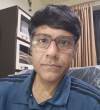
This session brings together all the scientists who are interested in relativistic astrophysics around galactic, extra-galactic and intermediate mass black holes, as well other compact objects. We welcome papers on the following topics and other from related topics:
1. Theory of accretion disks, outflows and jets and underlying magneto-hydrodynamic (MHD)
2. Emission processes from the disks and jets, including that of gravitational waves
3. Polarization properties of radiations from disks and jets
4. Fitting of satellite data by theoretical models
5. Evidences for disk-jet connections
6. General relativistic MHD (GRMHD), or otherwise as appropriate, simulations of flows in curved spacetime (e.g. black hole) geometry.
-
-
Artificial Intelligence Methods (AI)
-
Cosmic Insights from Big Data: How Machine Learning is Decoding the Universe
AI1Chairpersons: Giuseppe Angora and Lorenzo Bazzanini
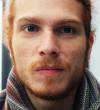
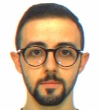
Machine learning (ML) and deep learning (DL) applications in astrophysics have gained enormous momentum in the last few years. Indeed, the exponential growth of astronomical data, thanks to the advancements of observational technologies, has demanded the development of intelligent tools for efficient data handling and extraction of new insights from these vast datasets. ML/DL techniques aim to identify and learn from patterns in data, thereby enhancing simulations and aiding in the understanding of complex phenomena, paving the way for novel discoveries. These techniques have found extensive applications in various domains, including galaxy classification, characterization of galaxy and stellar properties, simulation of large-scale cosmic structures, testing cosmological paradigms, detection of transient events, identification of gravitational lensing effects, and cosmic microwave background inpainting. As the field continues to evolve, interdisciplinary collaboration between astronomers and ML/DL experts will play a crucial role in harnessing the full potential of these techniques to advance our understanding of the universe. This session will delve into these applications and explore the prospects of ML/DL in astrophysics. -
Machine learning in astronomy: AGN, transient events, cosmology and others
AI2Chairpersons: Narek Sahakyan, Yu Wang, Rahim Moradi and Fatemeh Rastegarnia
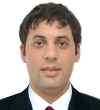

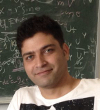
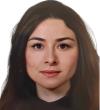
The increasing adoption of machine learning (ML) and deep learning (DL) techniques in astrophysics coincides with the exponential growth in astronomical data volumes driven by advancements in observational technologies and the increasing number of telescopes observing in different bands. This surge in data has not only revolutionized our approach to studying the universe but has also led to the development of sophisticated ML/DL tools capable of handling large datasets and extracting valuable insights. Through optimization techniques, ML/DL approaches aim to uncover hidden characteristics within data, enabling faster simulations, improved observations, and deeper understandings of cosmic phenomena. This parallel session aims to provide a comprehensive overview and showcase the latest developments in ML/DL applications in astrophysics. Topics covered include galaxy/star/quasar classification, redshift analysis, estimation of stellar atmospheric properties, simulation of vast cosmic structures, identification of reionization origins, detection of transient events, differentiation of gravitational lensing impacts, reconstruction of cosmic microwave background signals, modeling the observed data, exoplanets discovery and model derivation. -
Gamma-ray bursts and AGNs with machine learning
AI3Chairpersons: Maria Giovanna Dainotti and Yongfeng Huang and Gibrán Morales

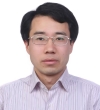

Gamma-ray Bursts offer a unique opportunity to look at the early universe and be probes of star formation and population III stars.
However, we need to solve many challenges in this regard: how to increase the number of redshifts and thus infer them, how to reconstruct lightcurves, etc., and machine learning will help with all of these.
We would like to present the state-of-the-art techniques used to tackle these issues by applying machine learning to GRBs and, more generally, high-energy sources, such as Active Galatic Nuclei.
-
-
Alternative Theories (AT)
-
Wormholes, energy conditions and time machines
AT1Chairperson: Francisco Lobo

The General Theory of Relativity has been an extremely successful theory, with a well established experimental footing, at least for weak gravitational fields. Its predictions range from the existence of black holes, gravitational radiation to the cosmological models, predicting a primordial beginning, namely the big-bang. All these solutions have been obtained by first considering a plausible distribution of matter, and through the Einstein field equation, the spacetime metric of the geometry is determined. However, one may solve the Einstein field equation in the reverse direction, namely, one first considers an interesting and exotic spacetime metric, then finds the matter source responsible for the respective geometry. In this manner, it was found that some of these solutions possess a peculiar property, namely 'exotic matter,' involving a stress-energy tensor that violates the null energy condition. These geometries also allow closed timelike curves, with the respective causality violations. These solutions are primarily useful as 'gedanken-experiments' and as a theoretician's probe of the foundations of general relativity, and include traversable wormholes and superluminal 'warp drive' spacetimes. In this parallel session, in addition to extensively exploring interesting features, in particular, the physical properties and characteristics of these 'exotic spacetimes,' we also explore other non-trivial general relativistic geometries that generate closed timelike curves. -
Theories of gravity: alternatives to the cosmological and particle standard models
AT2Chairperson: Orlando Luongo, Hernando Quevedo and Francesco Pace
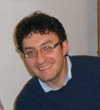

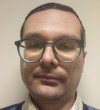
In the standard model of cosmology, the ΛCDM model based on Einstein’s General Relativity, dark energy is introduced completely ad hoc in order to explain the present acceleration of the universe. The model requires also the introduction of dark matter dominating (by far) ordinary baryonic matter but yet undetected in the laboratory, and it suffers from astrophysical problems. Modifying gravity is a possible alternative, and many such proposals have been presented in recent years. Likewise, the standard model of particle physics is unable to incorporate all the current particle phenomenology and proposed dark matter candidates.
Cosmology and particle physics come together in the early universe and, surprisingly, also in theories and models of the present, accelerating universe. This session is formulated in a wide framework to include several topics related to these problems, and spanning alternative theories of gravity and cosmology, alternatives to the ΛCDM model, quantum field theory applied to gravity, extensions of the standard model of particle physics, and dark energy and dark matter from a particle physics point of view. This session represents the interplay between, and the efforts to match, particle physics and cosmology, giving particular emphasis to the role played by particle quantum field theory in the early and the late universe.
-
-
Black Holes: Classical and Beyond (BH)
-
Gravitational instantons and black holes
BH1Chairperson: Reinoud Slagter

This parallel session covers instanton solutions on pseudo-Riemannian and Riemannian spacetime. These solutions originate from quantum field theory on Euclidean space, e.g. from Yang-Mills gauge theories. Their connections/curvatures are self-dual. In gravity, there are a handful of exact solutions. They have vanishing classical action and nontrivial topological invariant. The relation to quantum gravity is then easy. One can also relate these solutions to (primordial) black holes. After the discovery of black holes in the very early stages of the universe, the question arises as to how they came into being. Probably by an instanton. On the other hand, when a black hole evaporates completely, what is left behind? Related subjects: Kähler manifold, complex manifolds, symplectic structure, n-instanton moduli spaces. -
Black holes in alternative theories of gravity
BH2Chairperson: Jutta Kunz and Jose Luis Blázquez-Salcedo
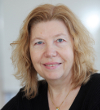

Black holes are excellent probes to study strong gravitational fields and thus to test Einstein's theory of general relativity and its contenders by comparing their predictions with observations. Alternative theories of gravity may lead to distinctive features for black holes, which include their multipoles, quasi-normal modes or shadows. -
Black hole formation, evolution and the black hole mass gap
BH4Chairperson: Grant Mathews
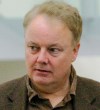
There is much current interest in the formation and evolution of black holes in relation to the black hole mass gap. The pair instability supernova in massive stars is believed to prohibit the formation of black holes in the range of 50-120 solar masses. Nevertheless, possible detections suggest the existence of black holes with masses well inside the "mass gap". Many ideas have emerged to explain the existence of black holes in the mass gap. This session will include talks summarizing various approaches to this dilemma. -
Black hole thermodynamics
BH5Chairperson: Hernando Quevedo and Alessio Belfiglio


This parallel session will be devoted to different aspects of black hole thermodynamics. Topics of interest include but are not limited to thermodynamic variables, phase transitions, extended thermodynamics, stability properties, and critical coefficients of black holes in any dimension. The session will also include the applications of different analytical and geometric methods in black hole thermodynamics.
-
-
Compact Objects and Stellar Evolution (CO)
-
Galactic and extragalactic magnetars: recent observations and theoretical progress
CO1Chairperson: Sandro Mereghetti and Simone Dall’Osso
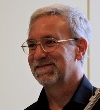

Magnetars, neutron stars powered mainly by their own magnetic energy, host the strongest magnetic fields in the Universe. Besides being unique laboratories to test physical theories in the strong field regime, their energetic outbursts on different timescales and the extreme properties of their birth events makes them relevant in diverse astrophysical contexts. Recent progress in this field has also been driven by the recognition of an expanding number of giant flares from magnetars outside the Local Group.
This parallel session will focus on the most recent observational results on Galactic and extraGalactic magnetars, as well as on the theoretical developments on their structure, formation and connections with other astrophysical phenomena (such as, e.g., fast radio bursts, gamma-ray bursts, super luminous supernovae, sources of high-energy cosmic rays, neutrinos and gravitational waves). -
Massive white dwarfs and related phenomena
CO2Chairpersons: Jaziel Goulart Coelho, Banibrata Mukhopadhyay and Jose Domingo Arbanil


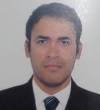
This session brings together all the scientists who are interested in
white dwarf (WD) physics and astrophysics, particularly the massive WDs,
and related topics including type Ia supernova and its progenitor.
We welcome papers on the following topics and other from related topics:
1. Theoretical and observational progress in WDs
2. Very fast rotating and/or magnetized, massive WD
3. Double WD mergers
4. Importance and possible identification of strong magnetic fields in WDs
5. Chandrasekhar limit and WD mass-radius relation, and their possible
theoretical and observational violation
6. Tidal deformability in WD
7. Nuclear processes in evolution of main sequence stars evolving to WD
8. Type Ia supernova progenitor
9. Explosive events as bursts, Fast Radio Bursts (FRBs)
10. Magnetic CVs including polar and intermediate polar
11. Gravitational waves from WD systems and their future detection -
Absolute stability of strange quark matter: from dark matter to stellar evolution
CO3Chairpersons: Alessandro Drago and Giuseppe Pagliara

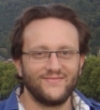
Forty years ago, Witten suggested that dark matter could be composed of
macroscopic clusters of strange quark matter. This idea was very popular
for several years, but it dropped out of fashion once lattice QCD
calculations indicated that the confinement/deconfinement transition, at
small baryonic chemical potential, is not first order, which seemed to
be a crucial requirement to produce large clusters of quarks. A few
recent observations on very massive (in GW190814 binary) and very light
(in supernova remnant HESS J1731-347) compact stars have renewed the
interest on the hypothesis of the absolute stability of strange quark
matter, which, if true, would have enormous consequences for our
understanding of the universe. We would like to revisit the conditions
under which strangelets can be produced in the Early Universe, the many
phenomenological implications of their existence and the most promising
techniques to detect this type of objects. This session aims at
gathering both theoreticians and experimentalists, expert on compact
stars, cosmology, cosmic rays, heavy ions in order provide a wide
overview on the present research activities on strange quark matter. -
A NICER View of Extreme Gravity from the International Space Station
CO4Chairperson: Zaven Arzoumanian and Guglielmo Mastroserio

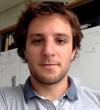
Strong gravity is the driver of some of the most energetic phenomena in the universe, which are also copious producers of X-rays. Imprinted on this radiation — in its brightness fluctuations and time-dependent energy spectra — are keys to our understanding of physical extremes: ultra-dense matter and exceptionally powerful electromagnetic fields, in addition to dynamic gravitational environments. NASA’s Neutron Star Interior Composition Explorer (NICER), a telescope on the International Space Station, provides the combination of capabilities in soft X-rays that is needed to probe extraordinary cosmic processes and to address high-priority questions in time-domain and multi-messenger astrophysics. Following a brief overview of the mission, this session will cover some key NICER results and their physical implications for the structure of neutron stars, accretion as a probe of black holes, gravitational waves from supermassive black-hole binaries and rapidly spinning pulsars, and the recently discovered "quasi-periodic eruption" phenomenon, which may represent the first electromagnetic evidence for extreme-mass-ratio inspiral events highly anticipated by the future LISA gravitational-wave observatory. -
Slowly rotating pulsars
CO5Chairpersons: Francesco Coti Zelati and Alice Borghese
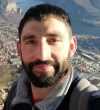

Over the past few years, sky surveys using a variety of radio instruments have led to the discovery of pulsating sources with much longer periods than those measured for the bulk of radio pulsars, placing them in an unexplored area of the spin period - spin period derivative diagram for pulsars. While some of these sources have been identified as slowly rotating neutron stars, the nature of other sources remains debated. This session aims to bring together observers and theoreticians to present and discuss the latest observational discoveries, the state-of-the-art modeling, evolutionary scenarios of these peculiar objects, and future prospects for this increasingly interesting field in pulsar research.
-
-
Cosmic Microwave Background, Cosmological Tensions (CM)
-
Cosmic backgrounds from radio to far-IR
CM1Chairpersons: Carlo Burigana and Tiziana Trombetti
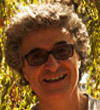
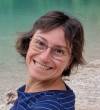
This parallel session will focus on the interpretation and perspectives for cosmology and astrophysics coming from cosmic backgrounds from radio to far-IR, both in temperature and in polarization. Following past CMB projects and the latest results from the Planck mission, sub-orbital experiments are improving our understanding of small scale anisotropies and searching for primordial gravitational waves, while future CMB missions of different scales are in preparation or under study. The sub-mm / far-IR domain, crucial for high-frequency foreground mitigation, allows to study a number of astrophysical cosmology topics, including the early stages of star and galaxy formation. In parallel, on-going and future radio projects promise to shed light on the dawn age and on the reionization epoch and to provide 3D images of the Universe's evolution. The authors of both invited and contributed talks are encouraged to underline the connection between astrophysical and cosmological results. -
Current Status of the H_0 and growth tensions: theoretical models and model-independent constraints
CM2Chairpersons: Joan Solà Peracaula and Adrià Gómez-Valent
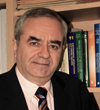

The era of high-precision cosmology has brought to the very forefront of our field a number of persistent discrepancies between observational data sets and the predictions of the standard model of cosmology, also known as the LCDM model. This situation has generated a lot of debate about whether the standard model is entering a crisis, maybe requiring some modifications or even a new theoretical paradigm, or whether the cosmological measurements are affected by unsuspected systematic errors. This session at MG17 will focus on the current status of these tensions both from the observational as well as from the theoretical point of view. Specifically, there will be talks addressing the following salient topics, among others:
(i) The direct and inverse cosmic distance ladders, their significance in determining the Hubble tension, methods for constructing them robustly, and potential sources of systematic errors.
(ii) Measurements of large-scale structure through galaxy clustering and weak lensing, and the implications for the growth tension.
(iii) Theoretical models beyond LCDM aimed at resolving these tensions.
(iv) Techniques for extracting model-independent information from cosmological data. -
Present and future of cosmic microwave background observations
CM3Chairpersons: Luca Pagano, Paolo Natoli, Margherita Lembo and Giacomo Galloni
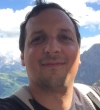

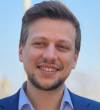
This parallel session focuses on the present and future of cosmic microwave background (CMB) observations, offering a comprehensive overview of the current state of CMB research and the exciting prospects for future advancements in the field. This session offers a comprehensive overview of recent advancements in CMB research, focusing on polarization measurements, spectral distortions, lensing, the Sunyaev-Zel’dovich effect, and relevant astrophysical sources. We invite presentations that illuminate recent findings and ongoing efforts, with particular emphasis on data analysis methodologies and the systematic effects influencing future CMB observations.
-
-
Cosmic Rays and Very High Energy Emission (CR)
-
AMS-02 experiment at the International Space Station
CR1Chairpersons: Manuela Vecchi and Mercedes Paniccia


AMS-02 is a state-of-the-art particle physics detector operating onboard the International Space Station (ISS) since 2011. It studies the universe and its origin by searching for antimatter, and dark matter while performing precision measurements of cosmic-ray composition and flux. AMS is the unique magnetic spectrometer on the Space Station and will operate through the entire ISS lifetime up to 2030 and beyond.
Due to the exquisite data precision and the long-term mission AMS-02 has brought galactic cosmic-ray physics to an unprecedented precision level, discovering several unexpected phenomena that pose severe challenges to the conventional description of the sources and propagation of cosmic rays within our Galaxy.
In this session, we welcome contributions about AMS-02 measurements and the interpretation of these results.
-
-
Dark Energy and Large Scale Structure (DE)
-
Large scale structure and dark energy
DE1Chairperson: Clément Stahl

This session will delve into the formation of cosmic structures, from the inflationary period to the Universe's late accelerating phase. We welcome contributions from both theorists, simulators, and observers to discuss the latest results of the field, particularly in light of the observations from eBOSS, DES, DESI, Euclid, LSST. We will explore the impact of different theoretical models on structure formation in the non-linear regime, with a focus on dark energy models, modified gravity, and relativistic corrections to Newtonian dynamics. Additionally, we'll discuss the effects of inhomogeneous cosmological models on relativistic cosmology and their implications for the universe's global properties. -
Dark Energy and the accelerating universe
DE2Chairperson: David Polarski and Arman Shafieloo
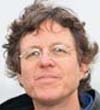

This parallel session will be devoted to the study of the nature and the physical properties of Dark Energy producing the observed accelerated expansion of the present Universe. It will cover the phenomenological reconstruction of dark energy properties from observations, as well as consideration of a wide variety of theoretical models and approaches aimed to explain existing observational data, including modified gravity models, interacting dark energy and other extensions. -
The Euclid mission: current status, results from early observations, and future prospects
DE3Chairpersons: Gianluca Polenta and Marina Migliaccio
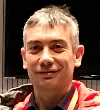
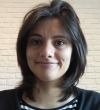
The ESA Euclid mission is dedicated to investigate the nature of dark matter and dark energy. By observing billions of galaxies at visible and near-infrared wavelengths across one third of the sky, Euclid will explore how large-scale structures have formed and evolved over the last 10 billion years during the accelerated expansion of the Universe. Following a successful launch on July 1st, 2023, and the subsequent commissioning and performance verification of the VIS and NISP instruments on-board the satellite, Euclid has started its nominal 6-year science program. This session will aim at providing an overview of the current status of the Euclid mission and the performance of its instruments, presenting early findings obtained from the Early Release Observations, and discussing prospects for future results.
-
-
Dark Matter (DM)
-
Dark matter detection
DM1Chaipersons: Ning Zhou, Hong-Jian He, Qian Yue and Qiang Yuan

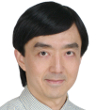
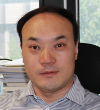
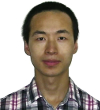
Dark matter detection has been an exciting frontier over the past twenty years. Particle physicists and astrophysicists are probing wide mass ranges to hunt for different dark matter (DM) candidates. In this parallel session, the speakers are welcome to present the experimental and theoretical works on both direct and indirect DM detection as well as the collider detection of DM, including such as WIMP candidates and beyond. -
First stars and their remnants as dark matter probes
DM2Chaiperson: Cosmin Ilie
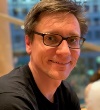
JWST observations of the earliest luminous structures in the Universe are beginning to challenge the standard models of the formation and evolution of the first stars and galaxies. Namely, they imply that a large fraction of the first galaxies ever assembled converted gas to stars at an incredible, almost 100% efficiency. Moreover, the most distant quasars observed are powered by black holes that are unlikely to have been seeded by Population III stars, and, instead, imply the existence of very massive Black Hole seeds at high redshifts. A possible solution to both of those puzzles are stars formed out of zero metallicity gas clouds at the center of high redshift Dark Matter halos and powered by Dark Matter, i.e. Dark Stars. The main over-arching question addressed by talks in this parallel session is: what can we learn about the nature of Dark Matter from observations of the first stars, their BH remnants, and the first galaxies in the Universe. -
Dark matter halos: its nature, modeling & tracers
DM3Chairperson: Carlos Argüelles
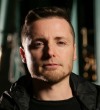
Actual attempts to explain the formation of DM halos and its final quasi-universal density profiles are mainly centered in N-body simulations. Despite its success in providing a fitting formula or law for the virialized distributions composed by collisionless particles, we still lack a clear understanding on both, its physical basis and in the very nature of the dark matter candidates. This session is devoted to different aspects of dark matter halos: (i) its modeling either from first principle physics or simulations; (ii) its nature either in terms of bosonic of fermionic particles; (iii) morphology constraints & tracers such as rotation curves or stellar streams among others. -
Mineral detection of dark matter and neutrinos
DM4Chairpersons: Patrick Stengel and Alexey Elykov

Nuclear recoils caused by interactions of Dark Matter or neutrinos can leave latent damage in the crystal structure of minerals. These damage features can be read out using a variety of modern microscopy techniques, ranging from optical (fluorescence) microscopy to techniques with sub-nm spatial resolution such as transmission electron microscopy. Using the damage features accumulated over 10 Myr--1 Gyr in natural mineral samples, one could measure astrophysical neutrino fluxes or search for a variety of Dark Matter candidates. Using signals accumulated over months to few-years timescales in laboratory-manufactured minerals, one could measure reactor neutrinos or use minerals as Dark Matter detectors, potentially with directional sensitivity. This parallel session will summarize some of the latest experimental and theoretical progress towards unlocking the potential of minerals as passive recorders of nuclear recoils. -
Bosonic dark matter and/in neutron stars
DM5Chairpersons: Soroush Shakeri and Davood Rafiei Karkevandi
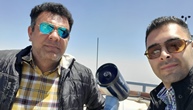
Among different Dark Matter (DM) candidates the scalar or pseudoscalar bosons are of great interest from various aspects in astrophysics and cosmology. Generally, bosonic DM could form gravitationally stable configurations or be substantially accumulated in compact objects such as Neutron Stars (NSs) through different scenarios. In this regard, the advent of multi-messenger observations via gravitational and electromagnetic waves provide a unique opportunity to probe the existence of dense astrophysical objects made entirely or fractionally by bosonic DM.
In this section, we will focus on both theoretical and observational aspects of boson stars, fermion-boson stars, DM admixed NSs and other exotic type of compact stars. Recently, the GW detections by LIGO-Virgo-KAGRA and X-ray observations by NICER telescopes have opened a new window towards understanding the structure of compact objects and may shed light on the nature of DM through exploring exotic results. -
Exploring the Universe with strong gravitational lensing
DM6Chairpersons: Piero Rosati and Massimo Meneghetti
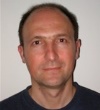
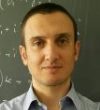
In recent years, the use of gravitational lensing techniques, particularly in the strong regime, has made great strides in addressing several outstanding questions in astrophysics and cosmology. A new generation of high-quality data from space and ground has driven a transition to high-precision strong lensing modeling of galaxy and cluster-scale lensing systems. As a result, robust and detailed reconstructions of the total mass distribution of galaxies and cluster cores have provided the means to test structure formation scenarios by comparing the results of cosmological simulations with mass maps inferred from strong-lensing data. In addition, the observed time delay among multiple lensed images of time-varying background sources in an increasing number of systems has opened new competitive ways to determine the expansion rate and geometry of the Universe. Lastly, the lensing magnification and amplification effects provided by massive clusters have allowed the exploitation of these systems as cosmic telescopes, particularly in the new JWST era, enabling the detection and spectroscopic characterization of primordial galaxies.
Upcoming experiments such as Euclid, LSST, and Roman are poised to revolutionize the field of strong lensing by increasing the known number of gravitational lensing events, where the aforementioned techniques can be applied, by orders of magnitude. In this session, we will delve into the exciting perspectives and prospects of utilizing strong lensing techniques in the coming years, exploring how upcoming experiments and advancements will continue to shape our understanding of the cosmos through gravitational lensing phenomena.
-
-
Early Universe (EU)
-
Inflation: perturbations, initial singularities and emergent universes
EU1Chairpersons: Eduardo Guendelman and Stefano Ansoldi
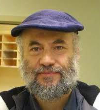
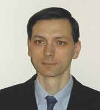
In this parallel session, we will have talks that consider inflationary models of all kinds and their relation to observables, reheating, production of primordial black holes, string theory ideas concerning perturbations and quintessential inflation. We will review also issues concerning the existence of initial singularities in the context of inflationary universes. Interesting theorems have been shown by Borde, Guth and Vilenkin indicating the existence of an initial singularity for the inflationary scenarios. The Emergent Universe, first proposed by George F. R. Ellis and Roy Maartens appeared then as an important exception to such theorem. This simple version of the Emergent Universe is unstable, but more developed versions seem stable, both classically and quantum mechanically. A consistent Emergent Universe could be more constrained and therefore more predictive, even on issues like the cosmological constant and others.
-
-
Experimental Gravitation (EG)
-
Experimental graviation
EG1Chairpersons: Claus Lämmerzahl and Hansjoerg Dittus


General Relativity is still the best tested fundamental theory of
physics. This theory determines our understanding of space and time.
Nevertheless, there are a series of inconsistencies and so far
unexplained phenomena with respect to quantum theories that it is
mandatory to test and to explore General Relativity as hard as possible.
This session is about testing the foundations as encoded in the Newton
axioms and in the Einstein Equivalence Principle as well as about the
consequences of General Relativity for laboratory and space tests. The
session addresses classical as well as quantum tests. -
Gravitational lensing, shadows and photon rings
EG2Chairpersons: Volker Perlick and Oleg Tsupko
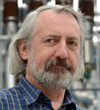
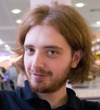
This session is devoted to gravitational lensing, shadows and photon rings. Emphasis is expected to be on analytical and numerical studies. In particular, we will discuss the shadows of black holes and other compact objects, higher-order images produced by lensing and the influence of a plasma on lensing effects. Talks on other aspects of light propagation in gravitational fields are welcome as well.
-
-
Fast Radio Bursts (FB)
-
Fast radio bursts
FB1Chairpersons: Maura Pilia and Paolo Esposito
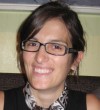
Fast Radio Bursts (FRBs) are short-duration (~ms) high-fluence (~Jy) radio-only events of extragalactic origin, some of which have been observed to repeat on various timescales. FRB durations define a characteristic length scale for their engine that points towards a compact object as a progenitor. The combination of high luminosity and short variability timescale of FRBs leads to extremely high brightness temperatures (of order 1036 K) which demands for a coherent emission process. The detection of 20200428, an FRB-like event produced by the Galactic magnetar SGR J1935+2154 strengthened the connection between FRBs and magnetars and it showed an X-ray counterpart to the radio emission in the form of a simultaneous burst.
This parallel session welcomes contributions on the many open questions regarding FRBs such as their progenitors, their connection with magnetars, the presence of one or more classes of FRBs.
-
-
Gamma-Ray Bursts (GB)
-
Gamma ray bursts relationships in multi-wavenths as cosmological tools
GB1Chairperson: Maria Giovanna Dainotti, Gibrán Morales and Yongfeng Huang



Gamma Ray Bursts (GRBs) are fascinating events due to the fact that they are observed at very large redshifts, up to redshift 9. Thus, in principle they can be excellent probes of star formation, to track the evolution history of the universe and to be useful for deriving cosmological parameters.
The problem is that GRBs do not seem to be standard candles with their energetic and luminosities spanning over several orders of magnitude.
Thus, the hunt for reliable relationships in multi-wavenths is the step necessary to use them as cosmological tools.
In this sessions we will investigate the current open problems and to which extent selection biases and cosmological evolution affects the application of GRBs as standard candles.
We will also discuss how much these probes can be used together with SNe Ia and other high redshift probes as quasars and what are the best method for calibrations. -
Emission mechanisms in gamma-ray bursts
GB2Chairpersons: Gregory Vereshchagin and Damien Bégué

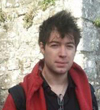
We will discuss basic radiation mechanisms producing observed spectra and light curves of gamma-ray bursts and their respective roles. Special attention will be given to theoretical and observational results aiming at discrimination between these mechanisms, in particular synchrotron and photospheric emission. In addition radiation mechanisms of high energy emission observed recently by the ground based Cherenkov detectors such as MAGIC and HESS as well as Air Shower Observatories such as LHAASO will be discussed. -
The SVOM mission in the time-domain era
GB3Chairperson: Maria Grazia Bernardini

SVOM (Space-based multi-band astronomical Variable Objects Monitor) is a Sino-French mission dedicated to the study of Gamma-Ray Bursts (GRBs), scheduled for launch in June 2024. Thanks to the synergy among 4 instruments in space and telescopes on ground, it is capable to detect and localize GRBs and to follow their evolution from the MeV and X-rays to the visible and NIR bands. The SVOM instrumentation, primarily designed for GRB studies, composes a unique multi-frequency observatory with rapid slew capability that will find multiple applications to study extra-galactic and galactic transient phenomena, and to the search and characterization of the electromagnetic counterparts of gravitational wave emitters. In this session we will present the main characteristics of the SVOM mission and the new science windows that it is going to open. We welcome as contributions new ideas of how to exploit the mission's capabilities for GRBs and transients from both an observational and theoretical point of view. -
GRB-SN connection
GB4Chairpersons: Giulia Stratta and Achille Fiore
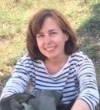
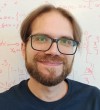
Since the first association of a core-collapse supernova with a long gamma-ray burst (SN 1998bw), about 45 very energetic type-Ic broad lined supernovae have been observed in spatial and temporal connection with long GRB, thus demonstrating their common origin in the vast majority of cases and establishing the ‘hypernova’ classification. In the last two decades, also other type of hypernovae (different from type-Ic broad lined supernovae) were discovered in association with long GRBs, but no
consensus has been reached about the universality of their affinity.
This parallel session focuses on the status of the art on both the observational and theoretical findings of very energetic SNe analogous to those associated with GRBs.
Among the topics we aim to address: i) long GRB SNe observational properties; ii) long GRB - SNe - magnetar connection; iii) long and ultra long GRBs - SLSN connection; iv) GRB supernovae as potential r-process sources; iv) GRB-SN studies in a multi-messenger framework. -
Modeling of binary neutron star and black hole-neutron star mergers, and of their electromagnetic counterparts
GB5Chairperson: Albino Perego and Oleg Korobkin
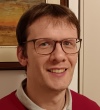
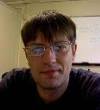
The recent detections in gravitational waves of binary neutron star and black hole-neutron star mergers have confirmed their relevance both from an astrophysical and a fundamental physics perspective. Additionally, GW170817 confirmed that compact binary mergers could be primary sites for r-process nucleosynthesis and the central engine of electromagnetic counterparts, including kilonovae and gamma-ray bursts. The detailed modeling of the mergers represents an open challenge that is key to predict and to interpret observations. This session welcomes presentations that illustrate the most recent and advanced progress in modeling the strong field dynamics occurring in mergers, as well as models that describe the production of kilonovae, gamma-ray bursts and r-process nucleosynthesis. Presentations about the physics and the microphysics entering all these models are also welcome.
-
-
Gravitational Waves (GW)
-
Astrophysics with gravitational waves
GW1Chairperson: Jose Fernando Rodriguez-Ruiz
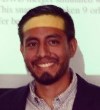
This parallel session will be devoted to the use of gravitational waves for the study and identification of astrophysical sources such as binary compact objects like double white dwarfs, binary neutron stars, and binary black holes, among others. This covers the relation between gravitational radiation and other forms of radiation (electromagnetic and neutrino emission). Additionally, multiwavelength gravitational wave astronomy will be discussed, focusing on the joint observations from space and ground-based interferometers. Finally, this session will also include the most recent advancements in observational and theoretical studies on how gravitational wave-optics effects at astrophysical scales can be used to identify halos and other types of structures. -
Micro-Hertz gravitational waves (0.1-100 μHz): sources and detection methods
GW2Chairpersons: Wei-Tou Ni and Gang Wang
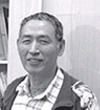
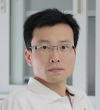
The micro-Hz GW (Gravitational Wave) band, ranging from 0.1 to 100 μHz, occupies a crucial intermediate gap between the PTA (Pulsar Timing Array) GW detection band (0.03—100 nHz) and the sensitive bands of space missions like LISA/Taiji/TianQin (0.1 mHz—1 Hz). This frequency range is abundant with potential GW sources. The primary scientific objectives within this band include the detection of GWs from supermassive BH (Black Hole) binary inspiral and coalescence events spanning masses of 105-1010 solar masses, as well as GWs emitted during the inspiral phase of intermediate-mass BH coalescence and intermediate BH binaries falling into supermassive BHs. Detection micro-Hz GWs will provide opportunities to study the BH co-evolution with the galaxies, to test general relativity and beyond-the Standard-Model theories, to explore the micro-Hz stochastic GW background and so on. Several detection proposals under study, including ASTROD-GW, Folkner’s mission, LISAmax, Super-ASTROD, μAries, optical clock missions, and AI (Atomic Interferometry) missions. We solicit new ideas and progress papers together with multi-band and multi-messenger papers for this parallel session. -
Mid-frequency gravitational waves (0.1-10 Hz): sources and detection methods
GW3Chairpersons: Youjun Lu and Wei-Tou Ni


The mid-frequency GW (Gravitational Wave) band (0.1-10 Hz) between the LIGO-Virgo-KAGRA detection band and LISA-TAIJI/TIANQIN detection band is rich in GW sources. In addition to the intermediate BH (Black Hole) Binary coalescence, GWs can also come from the inspiral phase of stellar-mass coalescence and from compact binaries falling into intermediate BHs. Detecting mid-frequency GWs enables us to study the compact object population, to test general relativity and beyond-the Standard-Model theories, to explore the stochastic GW background and so on. In addition to DECIGO and BBO, the detection proposals under study include AEDGE, AIGSO, AION, AMIGO, B-DECIGO, DO, ELGAR, GLOC, INO, LGWA, MAGIS, MIGA, SOGRO, TIAGO, TOBA, ZAIGA, etc. Great advances have accumulated since MG16. We solicit progress papers and new ideas for this parallel session. -
Low frequency gravitational waves: sciences and detections
GW4Chairpersons: Wenbiao Han and Jun Nian


The Laser Interferometer Space Antenna (LISA), Taiji and TianQin will observe the low-frequency (0.1mHz-1 Hz) Gravitational Waves (GWs) in space around the middle of 2030s. The GW sources include the supermassive black holes, Galactic binaries and cosmic sources. The mHz GWs will tell us the precise image of the supermassive black holes, the structure of our Galaxy, and the evolution history of the Universe. Especially GWs in this band can test general relativity in an incredible precision and may reveal the new physics. This session will include talks of these topics: theory and physics of GW sources, waveform simulation and data analysis, testing general relativity, GW cosmology, gravity theories, detection technologies and so on. -
Gravitational wave cosmology
GW5Chairpersons: Antonio Enea Romano and Simone Mastrogiovanni
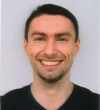
Gravitational waves (GW) emitted by binary systems, such as the ones
detected by the Ligo-Virgo-Kagra network or future ground and space GW
detectors, are a power tool to test cosmological models, since they
allow to measure distances without the calibration process necessary
for electromagnetic standard candles.
In this session recent results in gravitational wave cosmology will be
presented, such as the estimation of the Hubble constant and other
cosmological parameters, and constraints on beyond LCDM models. -
Gravitational kHz waves - LIGO-Virgo-KAGRA
GW6Chairpersons: Giulia Stratta and Barbara Patricelli


Since September 2015, more than one hundred gravitational wave (GW) sources have been discovered so far in the GW frequency range where current ground-based GW interferometers are sensitive (i.e. few Hz up to few kHz). Most of them have been identified as binary (stellar mass) black hole (BBH) mergers while two of them were consistent with neutron star binary mergers (BNS) and one with a merger of a BH with another compact object that could be a heavy NS or a light BH, falling in the still unexplored “mass gap” range. Only for the BNS GW 170817, an electromagnetic counterpart was detected in the form of a short GRB followed by a kilonova plus a non-thermal afterglow emission.
In this session we aim to make the status of the art of the discoveries achieved so far, their implications and future perspectives. Among the welcome thematics we highlight:
1. GW source properties obtained from LIGO-Virgo-KAGRA observations so far;
2. Observed and expected electromagnetic and neutrino counterparts of gravitational kHz wave sources;
3. Future observations of gravitational kHz wave sources.
-
-
High energy (HE)
-
High energy astrophysics
HE1Chairperson: Marat Gilfanov
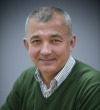
The session will aim to provide a venue for discussion of a broad range of topics of modern high energy astrophysics. These will include highlights from major X-ray and gamma-ray missions, their multi-messenger synergies and future prospects, as well as recent theoretical breakthroughs. It is envisaged that the topics will include but will be not limited to: compact objects on all mass scales, ultra-luminous X-ray sources, spectral formation in the vicinity of relativistic compact objects, transient phenomena of Galactic and extragalactic origin - ranging from X-ray novae to tidal disruption events. Synergies with other wavebands and with gravitational wave and neutrino astronomy will be also in the focus of the meeting. The session will be built around several invited and review talks with ample time left for shorter contributions. -
Future innovations in gamma-ray astronomy
HE2Chairpersons: Christopher Fryer, Michelle Hui and Adriano Di Giovanni
This session will focus on identifying future science drivers, necessary capabilities, and priorities for the future of space-based gamma-ray astronomy. These topics include the priorities in gamma-ray science, identifying the science that can be only done with gamma-ray observations (and what will be done with upcoming missions), synergies of gamma-ray science with other observations, discussing new technology in gamma-ray science and investments needed for this technology and outlining the advances in fundamental physics, theory, modeling and analysis for this science.
-
-
High-precision astrometry (HP)
-
The situation of the Galactic center
HP1Chairperson: Eduar Antonio Becerra Vergara
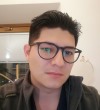
The nature of the compact object that hosts the center of our Galaxy remains a mystery and one of the hottest topics in recent years. This parallel session will be devoted to reporting advances in theoretical and observational work focused on unraveling the nature of Sagittarius A. Topics of interest include, but are not limited to, stellar orbits, redshift analysis, precession phenomena, shadows and gravitational lensing effects, matter accretion processes, energetic outflows and high-energy emissions, strong magnetic fields and any other physical phenomena that provide hints about the Sagittarius A nature. -
Latest results from Galactic center observations
HP2** Chairpersons: Florian Peißker, Maria Melamed and Anna Ciurlo**

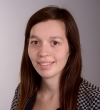

The Galactic Center with its central supermassive black hole (SMBH) provides a unique opportunity to study the interplay between accretion processes, and various star formation channels in special conditions. Comprehensive simulations, observations, and a detailed analysis of the composition of the inner few parsecs throughout all available wavebands help understanding the evolution of this peculiar region. In the Galactic Center, we have the unique opportunity to provide a blueprint for the composition of other galaxy cores, and deepen our astrophysical knowledge of the mechanisms at play in these regions, which we know ultimately are connected to the way galaxies evolve. In this session, new observations, analysis and models of this region should be presented. We especially want to discuss stellar dynamics, star formation, objects of unknown/debated nature, as well as other sources and phenomena and more general aspects on the Galactic Center.
-
-
History of Relativity (HR)
-
Navigating science and philosophy: exploring limits
HR1Chairperson: Shokoufe Faraji
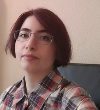
Physics, the pursuit of understanding the universe's deepest mysteries, confronts its inherent limitations as our knowledge expands. Despite our advancements, there are realms where physics falters, leaving unanswered questions that transcend empirical observation. Pushing the boundaries of science can give rise to challenging philosophical questions, particularly where the visible universe offers insufficient information to fully characterize the laws of physics. Thus, there arises a need for a more comprehensive framework that not only embraces science but also transcends its confines to address ultimate questions. In these uncharted territories, the convergence of science and philosophy becomes imperative. It may be that the complexity of the world surpasses mere scientific explanation, prompting a reassessment of the role of philosophy in scientific development to navigate the frontiers where equations alone fall short, probing the fundamental nature of reality and our place within it.
Considering that many questions once debated by philosophers are now within the domain of physicists. The objective of this parallel session is to explore the open issues pertaining to the aforementioned aspects and to foster collaboration among researchers from diverse disciplines, offering complementary viewpoints on these profound matters, also discuss whether philosophy enhances or impedes physics, and what is the plausible areas that these two can work the best together. -
Historical supernovae
HR2Chairperson: Costantino Sigismondi

The last Supernova observed in our galaxy occurred five years before the invention of the telescope by Galileo. Nevertheless the accuracy achieved by Tycho Brahe in observational astronomy already surpassed the Chinese standards based on the comparison with some fixed stars' positions. The understanding of the intrinsic difference between Novae and Supernovae was possible only in the XX century, and the correlation of some Supernovae with GRB is a XXI century scientific task.
We would like to focus on the development of the astronomical knowledge marked with the historical galactic supernovae, and the most relevant extragalactic ones, up to the present.
Featuring:
- Naked eye astronomy along the history
- The Lupus' 1006 Supernova
- The Chinese 1054 progenitor of the Crab Nebula
- Tycho and the 1572 Supernova
- Galileo and Kepler's roles with the 1604 Supernova
- From S Andromedae to SN 1987 A
- Novae, Supernovae, Kilonovae and Hypernovae:an historical approach
-
-
Multimessenger Astrophysics (MA)
-
Multi-messenger astronomy with gravitational waves
MA1Chairperson: Shu-Xu Yi
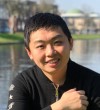
The advent of gravitational wave astronomy has heralded a new era in multi-messenger astrophysics, offering unprecedented insights into the cosmos through the synergistic analysis of gravitational waves, electromagnetic signals, and other cosmic messengers. This collaborative approach has not only enhanced our understanding of some of the universe's most enigmatic phenomena, such as binary neutron star collisions, but has also paved new pathways for exploring the fundamental laws of physics and the nature of the Universe itself.
This session welcomes presentations that utilize joint observations with gravitational waves and other astronomical messengers as probes into fundamental physics, cosmology, and astrophysics. Furthermore, we invite contributors to share works that offer software tools designed for simulating, analyzing, or aiding in the joint observation of gravitational waves and other messengers. -
New frontier of multi messenger astrophysics: follow up of electromagnetic transient counterpart of gravitational wave sources
MA2Chairpersons: Fabio Ragosta and Silvia Piranomonte
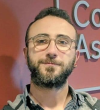
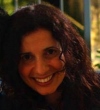
The first detection of an EM counterpart of a GW detection creates a possibility for a new way of thinking the astronomy, multi-messenger observations of GW170817 helped us construct a more comprehensive picture of compact binary mergers in an astrophysical context; and it has even enabled us to put significant constraints on topics of broad interest in physics from the neutron star equation of state to the expansion rate of the Universe. However, the expected counterpart from the neutron star-black hole system hasn’t been found yet. Furthermore, the most recent observing runs of the IGWN didn’t show any GW detection with a visible EM counterpart. This session aims to explore the lessons learned from the observed counterpart and the non-observation and to prepare the community for future detection. -
Repeating transients in galactic nuclei: confronting observations with theory
MA3Chairpersons: Francesco Tombesi and Petra Sukova

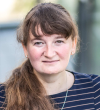
In the last few years, a mysterious new class of astrophysical objects have been uncovered. These are spatially coincident with centers of external galaxies and show X-ray variations that repeat on timescales of minutes to a month. They manifest in three different ways in the data: stable quasi-periodic oscillation (QPOs), quasi-periodic eruptions (QPEs) and quasi-periodic outflows (QPOuts). QPOs are systems that show smooth recurrent X-ray brightness variations while QPEs are sudden changes that appear like eruptions. QPOuts represent systems that exhibit repeating outflows moving at mildly-relativistic velocities of (0.1-0.3)c, here c is the speed of light. Their underlying physical mechanism is a topic of heated debate, with most models proposing that they originate either from instabilities within the inner accretion flow or from orbiting objects. There is a huge excitement especially from the latter class of models as it has been argued that some repeating systems could host extreme mass ratio inspirals potentially detectable with upcoming space-based gravitational wave interferometers. Consequently, paving the path for an era of “persistent” multi-messenger astronomy.
-
-
Neutrinos (NU)
-
ANTARES – 15 years of multi-messenger astronomy in the sea
NU1Chairpersons: Luigi Antonio Fusco and Agustín Sanchez Losa


The ANTARES neutrino telescope took data for 15 years in the Mediterranean Sea, from 2007 to 2022, and collected a high-purity all-flavour neutrino sample. The final analyses of this sample have been carried out, in the search for neutrino signals in many channels: individual sources, either steady or flaring, also including the information from electromagnetic observations, galactic signals, all-sky diffuse emissions, various searches in the multi-messenger context, but also studies of neutrino properties and searches for physics beyond the standard model. This session collects an overview of such searches and enlightens the future perspectives for neutrino telescopes in the Mediterranean Sea. -
Unveiling neutrino secrets through cosmology: current status and future developments
NU2Chairpersons: Massimiliano Lattanzi, Martina Gerbino, Luca Caloni and Nicola Barbieri



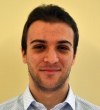
In the past few years, precision cosmology has emerged as a powerful tool to investigate neutrino properties and interactions, providing complementary information to laboratory experiments with unprecedented sensitivity. From the impact on the abundance of primordial elements to the signatures left on the anisotropies of the Cosmic Microwave Background and the subsequent clustering dynamics, neutrinos exert a diverse range of effects on cosmological observables thanks to their rich phenomenology.
Several fundamental questions are still left without an answer, including the origin and hierarchy of neutrino masses, their Dirac or Majorana nature, and the presence of additional neutrino species. This session will explore all these fundamental aspects of neutrino physics, by exploiting the interplay between cosmological observations and laboratory experiments. We will outline current constraints, discuss future prospects, and explore novel techniques to deepen our knowledge of neutrino properties. -
Neutrinos in the multi-messenger era
NU3Chairpersons: Dafne Guetta and Silvia Celli
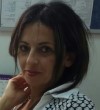

Neutrino astronomy has witnessed huge progresses in recent years thanks to a wide variety of observations concerning the emergence of high-energy emissions beyond the well-known all-sky diffuse, including the Galactic flux as well as with the hot spot in correspondence of the disk-obscure AGN NGC1068. At the same time, realtime neutrino alerts are regularly followed up in their electromagnetic counterparts, providing new interesting results on the transient and variable sky. This session will report on the latest results in neutrino astronomy and its multi-messenger connections including gravitational waves, with the aim of providing a clear understanding of the state of the art and fostering the collaboration among experiments.
-
-
Quantum Gravity (QG)
-
Loop quantum gravity: cosmology and black holes
QG1Chairpersons: Jorge Pullin and Parampreet Singh
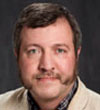

Session on loop quantum gravity concentrating on developments in black holes and cosmologies. -
Loop quantum gravity
QG2Chairpersons: Jerzy Lewandowski and Cong Zhang
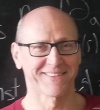

One of the most challenging topics in modern physics is how to unify quantum mechanics and general relativity. Loop quantum gravity is a background independent and non-perturbative approach to tackle this challenge. This session is a comprehensive exploration of all facets of the full theory of loop quantum gravity. We encourage presentations on recent developments in canonical loop quantum gravity, spin foam models, group field theory and other related approaches to quantum gravity. Central to our discussions is the concept of background-independent quantization of various theories of gravity and the emergence of quantum geometry. -
Causal set theory
QG3Chairperson: Yasaman Yazdi

If, as many believe will be the case, we are to have a theory of quantum gravity, then one primary question is: what is the structure of a "quantum spacetime"? i.e. what does spacetime look like at microscopic scales near the Planck scale and what would a gravitational path integral yield, in such a theory of quantum gravity? Causal set theory is an approach to quantum gravity that embraces these questions in a nonperturbative and causal manner. In causal set theory the underlying structure of a macroscopic continuum spacetime is proposed to be a fundamentally discrete spacetime with nothing in between the elements and with causal relations between some of the elements.
This session will present a status report of causal set theory as well as discuss recent advances in the areas of cosmology, quantum field theory, dynamics and the emergence of spacetime. -
Quantum gravity phenomenology
QG4Chairperson: Giovanni Amelino-Camelia and Giulia Gubitosi

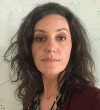
This session will be devoted to discussion of phenomenological models aimed at probing and possibly leading to detection of various phenomena of quantum gravity origin. Such models are particularly timely now, at the down of the multi-messenger astronomy, which give us an access to new observations, possibly capable of detecting Planck-scale effects. The aim of the session will be to present recent developments in both theoretical investigations and current and near-future observational opportunities. -
Quantum field theory in curved spacetimes and perturbative quantum gravity
QG5Chairpersons: Sebastián Franchino-Viñas and Markus Fröb
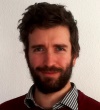
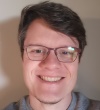
The theory of quantum field theory in curved spacetimes and the perturbative (effective field theoretic) approach to quantum gravity provide one of the most effective and developed joint descriptions of matter and gravity. This session is devoted to the discussion of their formal aspects and their applications to describe phenomena in cosmology and astrophysics, including (but not limited to) the energy-momentum tensor and the semiclassical Einstein equations, symmetries and anomalies, QFT in de Sitter space, effective actions and the renormalization group. -
Trends on cosmology and quantum gravity
QG6Chairpersons: César Zen Vasconcellos, Peter Hess, José Antonio de Freitas Pacheco, Fridolin Weber
The parallel session intends to provide a platform to discuss questions currently driving the Quantum Gravity field in an open and constructive format. With this spirit, the parallel session intends to highlight the interplay between gravitational physics and quantum gravity, focusing on topics such as: recent developments in canonical loop quantum gravity, covariant loop quantum gravity (spin foams), applications, mathematical, numerical, and phenomenological aspects of symmetry-reduced models, quantum cosmology, black holes in quantum gravity, tests and probes of quantum gravity, extensions of classical and gravity theories, commutative and non-commutative algebraic formulations of quantum gravity, conformal symmetry formulations in quantum gravity, among others.
-
-
Strong Fields (SF)
-
Strong electromagnetic and gravitational field physics: From laboratories to early Universe
SF1Chairpersons: Sang Pyo Kim and She-Sheng Xue and Ehsan Bavarsad

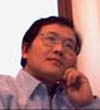
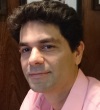
Strong electromagnetic and gravitational fields play important roles in physics, particularly in astrophysics and cosmology. Strong electromagnetic and gravitational fields are two of the most important ingredients of the compact objects and the early universe. This session is dedicated to all theoretical aspects of high field and/or energetic phenomena due to strong electromagnetic fields and/or gravity in Earth-based laboratories as well as astrophysics and cosmology, such as Schwinger pair creation in Minkowski spacetime and curved spacetimes, Gibbons-Hawking radiation, backreaction effects, magnetogenesis, charged particle acceleration, vacuum polarization, and nonlinearity of strong electromagnetic fields. It is also dedicated to experimental and theoretical aspects of laboratory astrophysics and astrophysical observations related to strong field physics, such as intense lasers plasma acceleration, plasma interaction with strong electromagnetic fields, radiation from accelerating charges, observation of birefringence in neutron stars, simulation of strong gravity effects etc.
-
-
Theory and Experiments in Fundamental Physics
-
Extended theories of electromagnetism and their impact on laboratory experiments and astrophysical observations
TF1Chairpersons: Claus Lämmerzahl and Alessandro Spallicci


Despite the detection of neutrinos, cosmic rays and recently gravitational waves, astronomy is largely based on electromagnetic signals, still interpreted with 19th century Maxwellian linear electromagnetism. But the latter might not be the right tool to interpret any electromagnetic phenomenon. For example, in the presence of strong fields or at extreme scales, Maxwellian electromagnetism may fail and become part of a larger theory, as Newtonian gravity is an approximation of the highly non-linear Einsteinian gravity. Meanwhile, inexplicable observations about the universe are prompting cosmologists to propose either new ingredients like dark matter and dark energy, as part of a complex multi-parametric concordance model, holding to general relativity. This approach leads to 96% of the universe being constituted by dark components experimentally undetected and not foreseen by the Standard Model (SM). Others, unconvinced of filling observations with enormous quantities of ad hoc ingredients, propose new theories of gravitation. Unfortunately, for this option, general relativity consistently records successes. Faced with this dichotomy and the respective pitfalls, a third (complementary) option is the study of the nature of the messenger: light. The photon is the only free massless particlle in the SM, and waves emerge from a 19th century linear theory. Could a different interpretation of light lead to a less troublesome interpretation of the universe? Which are the implications for gravity? Experiment oriented talks are welcome.
-
-
X-ray Polarization (XP)
-
IXPE observations and multiwavelength opportunities
XP1Chairpersons: Immacolata Donnarumma, Laura Di Gesu and Luca Baldini



Launched on December 9, 2021, the Imaging X-ray Polarimetry Explorer (IXPE) is the first mission entirely devoted to astronomical X-ray polarimetry, and the first providing simultaneous polarimetric, spectral, and imaging capabilities in the 2–8 keV energy band. Through its baseline 2-year mission, IXPE has performed about 160 distinct observations, covering more than 60 unique sources across diverse classes, and, starting from the third year in orbit, the observatory is operating as a General Observer (GO) facility.
This session provides a cross-section of the most relevant scientific results from the prime phase of the mission with a special emphasis on the role of this new diagnostic in the current and future multiwavelength synergy landscape.
-
Choose timezone
Your profile timezone:

